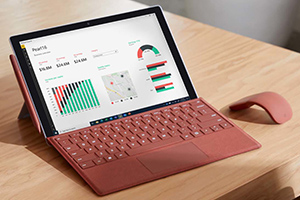Beware of the high cost of poor IT asset management
As your organization grows over time, it’s only natural to continually make workplace modernization a point of emphasis in IT. There are a multitude...
2 min read
![]() Zones
:
Feb 1, 2022 4:00:00 AM
Zones
:
Feb 1, 2022 4:00:00 AM

Nowadays, corporate IT leaders are facing an entirely new challenge when it comes to workplace modernization.
In a previous era, it was all about outfitting the on-premises work environment with the best possible technology – you had employees in offices, sitting at desks, and you had to give them computers. Simple enough. But now, people are far-flung, distributed, working in all sorts of remote and mobile ways. This has forced IT to revisit their approach to both asset management and configuration management.
“Aren’t they the same thing?” you might be asking. Turns out, this is a common misconception. According to TechTarget, “asset management” and “configuration management” are two terms that are often used interchangeably in IT circles, yet the reality is they refer to two very different processes. They may move in the same orbit, as they both concern the operation of user devices over the long haul, but there are key distinctions that IT pros need to be aware of.
Configuration management refers to the ways that IT services and systems are initially brought to life. A big part of this is change management – in other words, having a set of plans and processes to manage the way employees transition to new IT.
Asset management is a more holistic term. It refers to not just managing the setup process, but more broadly, taking care of your employees’ IT across its entire lifecycle.
Having said all this, there’s no doubt that the two can overlap. Whenever a new device is integrated into your organization’s IT strategy, you’ve got to think about how it impacts your plans for both configuration management and asset management. As you assess the costs – both in terms of funding and man-hours – required to set that device up and use it – you’ll need to plan for both your short-term and long-term goals. Your assets often begin as configuration items, and part of your challenge in IT is to manage them accordingly.
Of course, in an ideal world, you wouldn’t have to lose sleep thinking about this distinction between configuration and assets – you’d simply have a robust game plan that included both. If your approach to IT deployment is one that takes configuration into account from day one, but also keeps one eye on the bigger picture, you’ll be well equipped to succeed.
And at Zones, that’s exactly the approach we emphasize. When it comes to configuring and managing your IT assets, we can offer the total package. We’ve got great deals on Microsoft Surface devices, which are perfect for keeping your team productive no matter where or how they work – and those devices come fully loaded with Microsoft 365. With our White Glove services, configuration will be taken care of – and with the additional services Zones offers, including asset tagging and inventory management, you’ll be able to continually take good care of your IT for the long haul.
Configuration management isn’t easy. Asset management is no walk in the park, either. But with Zones’ support, you’ll have everything you need to tackle both of them, and then some. To dig a little deeper, connect with us today.


As your organization grows over time, it’s only natural to continually make workplace modernization a point of emphasis in IT. There are a multitude...

For numerous organizations worldwide, the past year has been an adventure. The world is changing rapidly, and we’ve all been forced to quickly...

Over the last year, businesses around the world have worked quickly to undertake new plans for workplace modernization. As employees have...